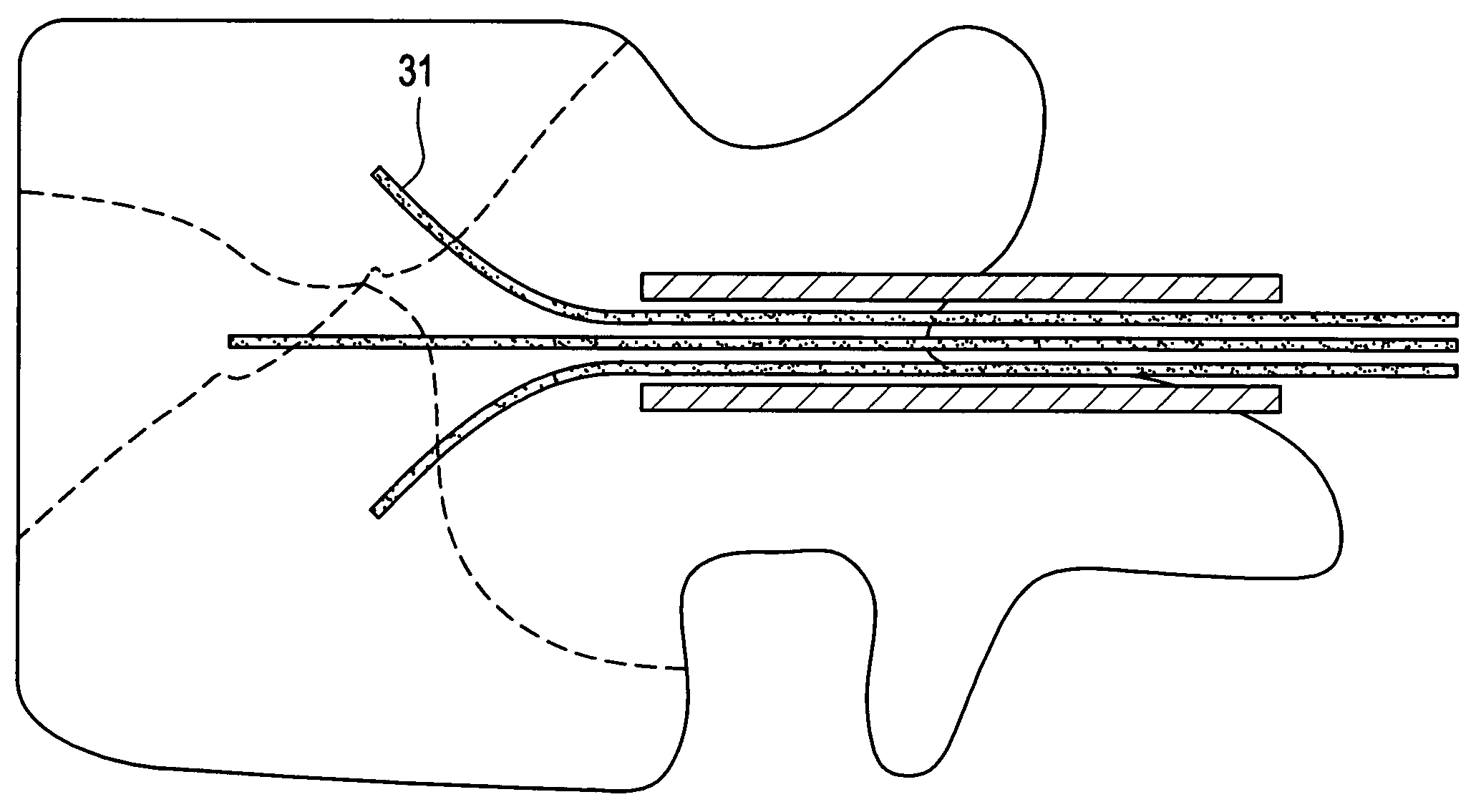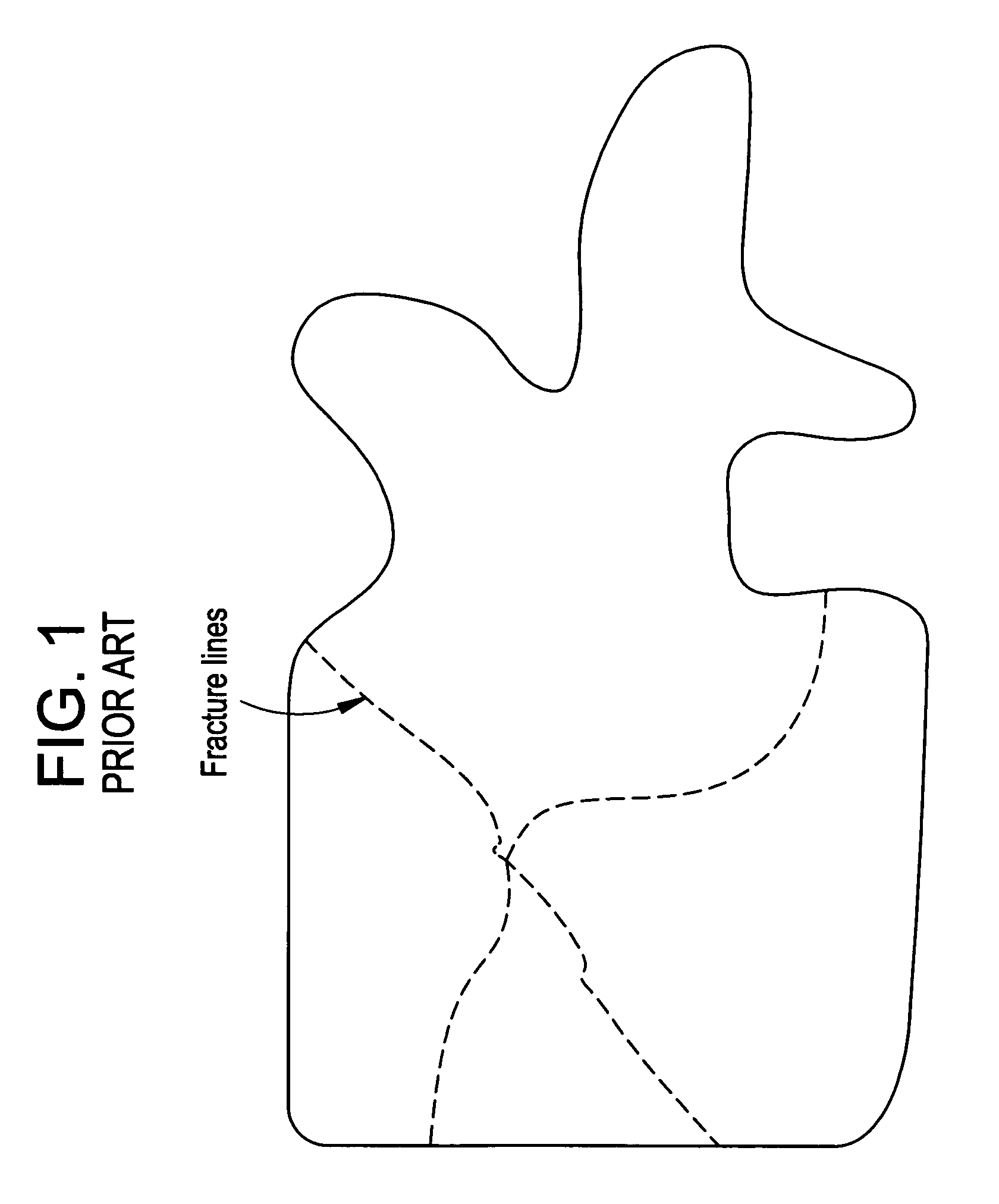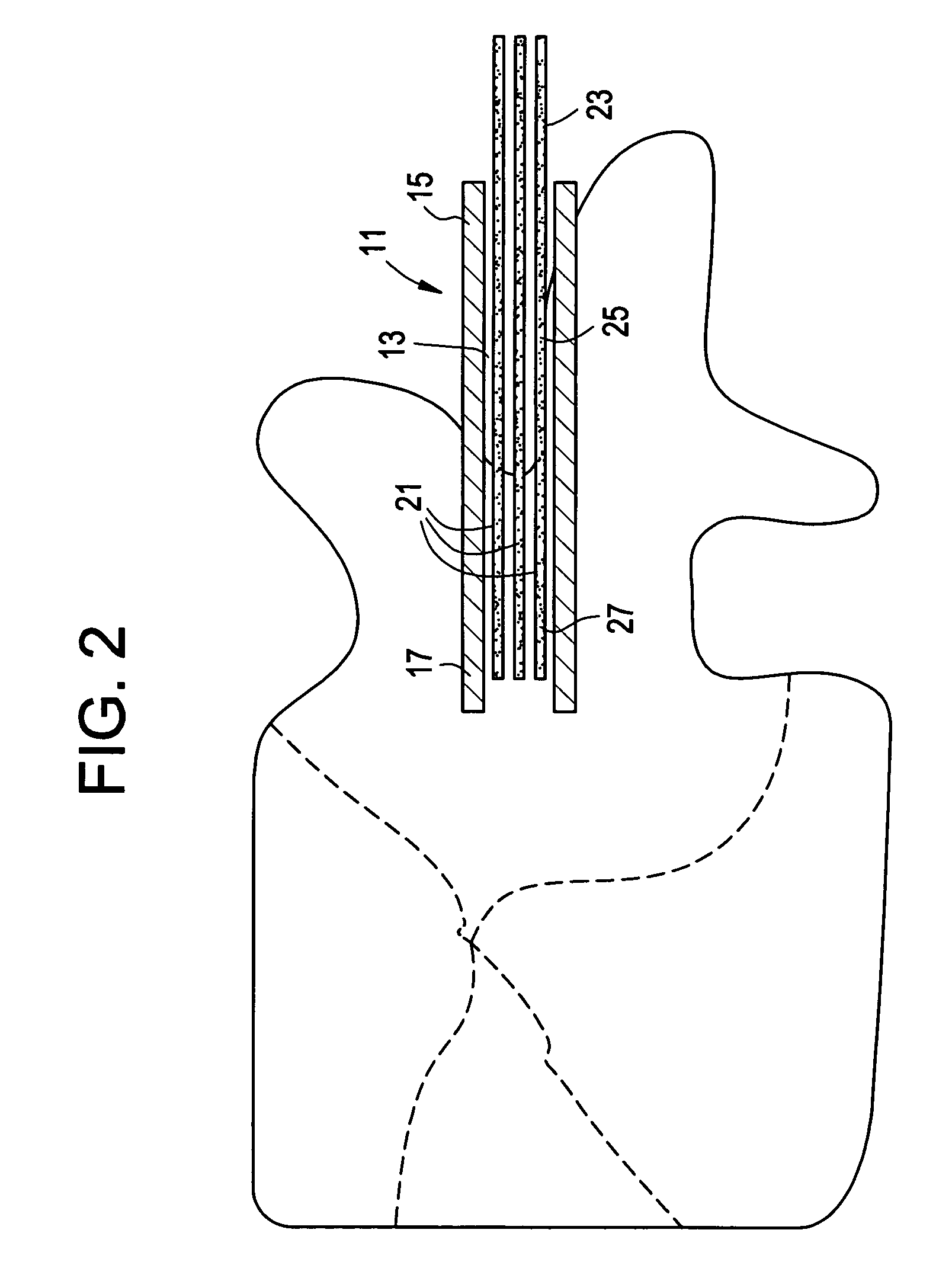Tissue augmentation, stabilization and regeneration technique
a tissue augmentation and stabilization technology, applied in the field of tissue augmentation, stabilization and regeneration techniques, can solve the problems of high pressure spikes, largely restricted effort, and inability to promote bone regeneration, and achieve the effect of stabilizing the fracture site and promoting the growth of new bon
- Summary
- Abstract
- Description
- Claims
- Application Information
AI Technical Summary
Benefits of technology
Problems solved by technology
Method used
Image
Examples
Embodiment Construction
[0022]In one preferred embodiment, and now referring to FIG. 2, the method of the present invention treats an osteoporotic vertebral body compression fracture.
[0023]First, and now referring to FIG. 2, the device 1 of the present invention is provided. The device comprises:[0024]a) a trocar 11 having a longitudinal throughbore 13, a proximal end 15 and a distal end 17, and[0025]b) a plurality of flexible reinforcement rods 21 having a proximal end portion 23, an intermediate portion 25, and a distal end portion 27,
[0026]The trocar containing the rods is inserted into the fractured cortical shell and fractured cancellous bone regions of the vertebral body.
[0027]Next, and now referring to FIG. 3, the plurality of flexible reinforcement rods are advanced distally into the vertebral body from within the bore of the trocar. Upon advancement, the proximal ends of the rods extend proximally from the proximal end of the trocar, the intermediate portions of the rods are disposed within the lo...
PUM
 Login to View More
Login to View More Abstract
Description
Claims
Application Information
 Login to View More
Login to View More - R&D
- Intellectual Property
- Life Sciences
- Materials
- Tech Scout
- Unparalleled Data Quality
- Higher Quality Content
- 60% Fewer Hallucinations
Browse by: Latest US Patents, China's latest patents, Technical Efficacy Thesaurus, Application Domain, Technology Topic, Popular Technical Reports.
© 2025 PatSnap. All rights reserved.Legal|Privacy policy|Modern Slavery Act Transparency Statement|Sitemap|About US| Contact US: help@patsnap.com



